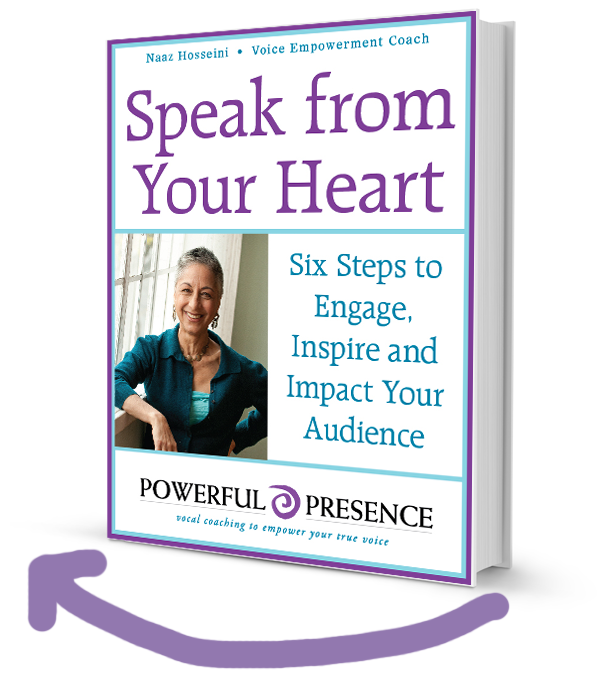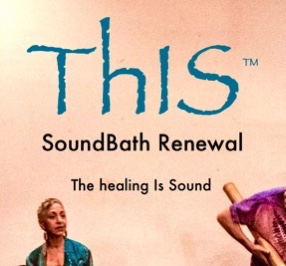Move a Muscle, Change a Thought
 Overcoming Performance Anxiety Tip #3: Move a Muscle, Change a Thought –
Overcoming Performance Anxiety Tip #3: Move a Muscle, Change a Thought –
A few days ago, I wrote about overcoming performance anxiety.
I followed that post with a couple of tips on how to get yourself grounded and steady when you’re nervous about speaking. If you didn’t get a chance to read those two posts, you can find them by following these links:
And now, another way to calm your nerves:
Move a Muscle, Change a Thought
We tend to believe our feelings as if they were absolute. We can take our feelings very seriously.
The wonderful saying “move a muscle, change a thought” gives us a way out of the tyranny of feelings.
- If you’re feeling low
- If you’re anxious
- If your feelings are hurt
- If you’re angry
You can actually shift these states by using your body, by moving it, by changing your physical stance.
So, how can we move a muscle to change a thought?
There are many ways.
Running, yoga, dance and other physical exercise have long been recognized as mood enhancers.
But it’s also possible to shift your mood or feelings in two minutes without leaving your spot. You can do it in a chair, standing at a podium, or in the middle of a conversation.
Try this experiment:
- Slouch your shoulders.
- Let yourself shrink and contract.
- See how that feels.
- You might feel small, stiff, reluctant to move.
- Your breath may be confined to a very small area in your sunken chest giving you precious little room to speak.
- Now do the opposite.
- Stand tall with your feet apart and reach your arms into the air like the victory sign.
- Stretch yourself out.
- Check out how you feel in this stance.
Note: if there’s a voice in your head telling you that you look silly or some such thing, ask it to give you a little space to feel the postures without judgment. Just feel them. Nobody has to see you.
When you do this little experiment, you’ll probably experience quite a difference between feeling very small and limited (slouched) vs. feeling big and ready (victory stance).
Research shows that assuming a powerful posture actually shifts your experience of yourself. See Amy Cuddy’s fabulous TED Talk, “Your Body Language Shapes Who You Are.”
Of course, when you’re actually speaking, you won’t need to reach your arms in the air, but your posture still can be fully long and open as if your arms were reaching up and out. This “bigger you” creates a sense of readiness, confidence, and “can do”.
When you take on a “power pose,” anxiety cannot fester and refuel.
Move a muscle, change a thought and you shift how you think and feel about yourself.
Find more ways to ‘move a muscle, change a thought” in my e-book, “Speak from Your Heart: Six Steps to Engage, Inspire, and Empower Your Audience.”
How aware are you of using your posture to help you overcome performance anxiety? Share your experience in the comment section, below.
Here’s another tip on overcoming performance anxiety: Beginners Guide to Breathing.
And, stay tuned for more tips on “Overcoming Performance Anxiety” in future posts.
Your Powerful Presence Coach,
© 2013 Naaz Hosseini. All Rights Reserved. Copying or resposting this content without written permission is strictly prohibited.
About the Author: Naaz Hosseini
 Naaz Hosseini is a singer, dancer, psychotherapist, and voice empowerment coach. She developed Powerful Presence™ coaching to help corporate and entrepreneurial women step into their vocal power to command the attention and respect they deserve. As a NYS Licensed Psychoanalyst and Qualified Gestalt Therapist, she supervises and trains mental health counselors at Teachers College Columbia University and therapists at the Gestalt Center for Psychotherapy and Training. She served as visiting faculty at the Harvard Graduate School of Education Project Zero Summer Institute for ten years where Howard Gardner has said, "With enthusiasm, I recommend Naaz Hosseini, a pioneer in using the voice and the body for understanding."
Naaz Hosseini is a singer, dancer, psychotherapist, and voice empowerment coach. She developed Powerful Presence™ coaching to help corporate and entrepreneurial women step into their vocal power to command the attention and respect they deserve. As a NYS Licensed Psychoanalyst and Qualified Gestalt Therapist, she supervises and trains mental health counselors at Teachers College Columbia University and therapists at the Gestalt Center for Psychotherapy and Training. She served as visiting faculty at the Harvard Graduate School of Education Project Zero Summer Institute for ten years where Howard Gardner has said, "With enthusiasm, I recommend Naaz Hosseini, a pioneer in using the voice and the body for understanding." 














